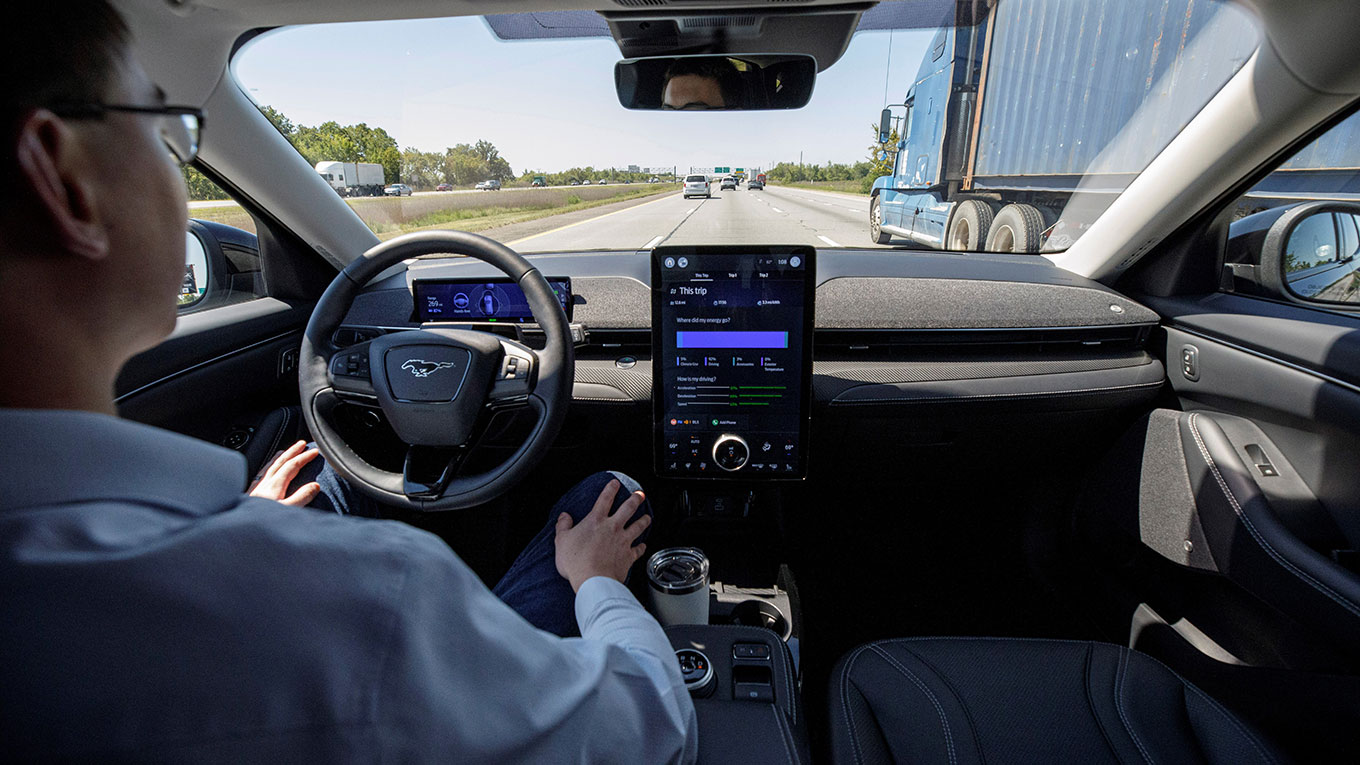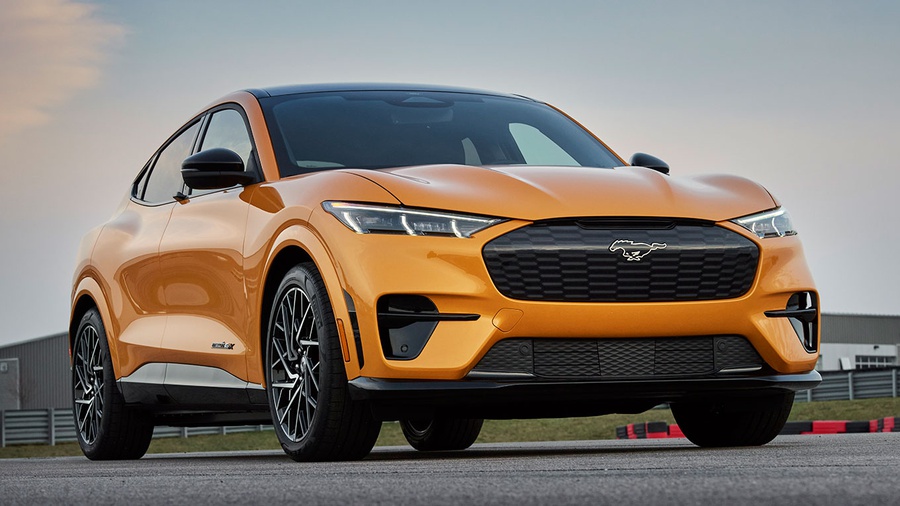Ford's new update includes Lane Change Assist, Predictive Speed Assist, and In-Lane Repositioning to make the BlueCruise experience more seamless.
"We are investing in our ADAS team to constantly improve BlueCruise and ActiveGlide for our customers," said Doug Field, Chief EV & Digital Systems Officer, Ford Model e. "The latest improvements allow customers to command lane changes using just a turn signal, and make hands-free driving feel more human-like by smoothly slowing down for turns, and giving more room to large vehicles in neighboring lanes."
The first function allows drivers to travel in traffic on the freeway. A lane change may be requested simply by tapping the turn signal with it. If the car senses that it has been following slow-moving traffic, it can even propose a lane shift through the infotainment system, which must be acknowledged by tapping the signal.
Predictive Speed Assist automatically adjusts a vehicle's speed as it approaches a sharp curve by reading the navigation software. It will also signal to the driver when it is slowing down and why, so that the experience is completely transparent.
In-Lane Repositioning is the last of three systems, and it's designed to make driving feel more natural. If there's a large truck in the next lane over and you're getting too close for comfort, In-Lane Repositioning will move your vehicle subtly to the side so you have more space. The idea is that this small change will make driving less stressful overall and let the driver know that their car sees the big truck.
The automaker has also improved the aesthetics of BlueCruise and ActiveGlide, as well as improving the sensing and steering experiences. The systems may now be used on more than 130,000 miles (209,215 km) of divided highways, with continual over-the-air updating of mapping technology.
The new system, which is set to debut in the fourth quarter of this year on new Ford and Lincoln vehicles (where it's known as ActiveGlide 1.2), will be initially made available on the Mustang Mach-E.
Source: Ford


